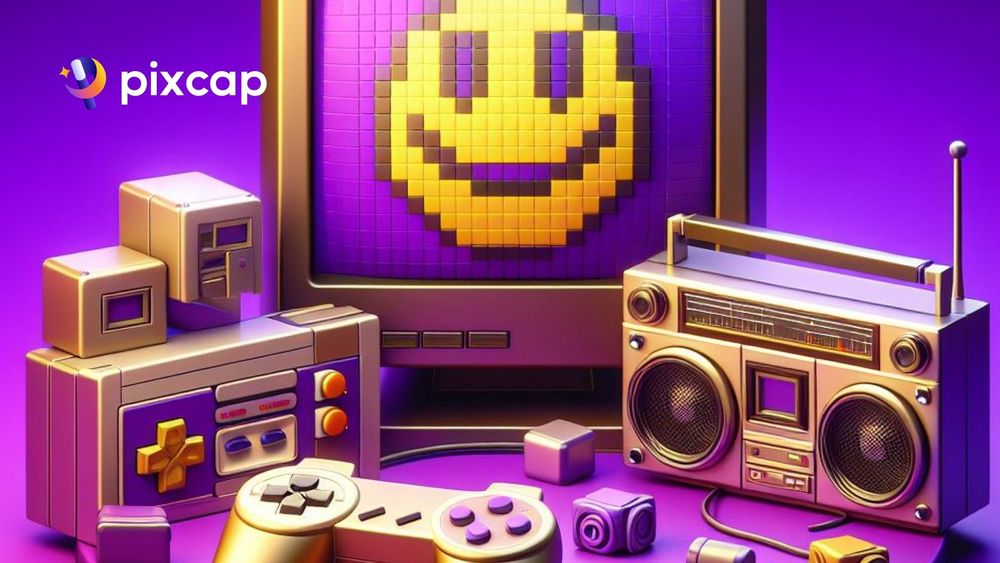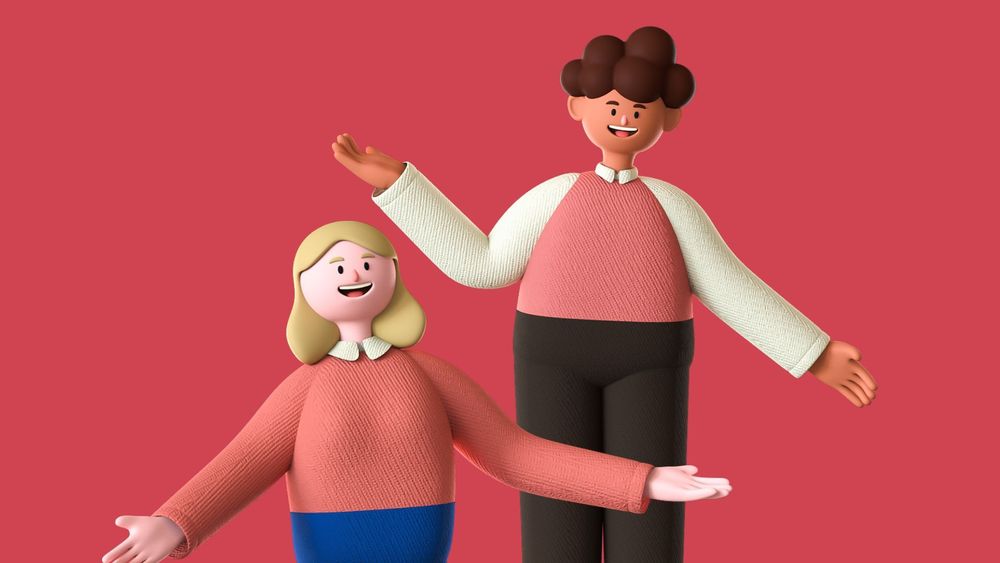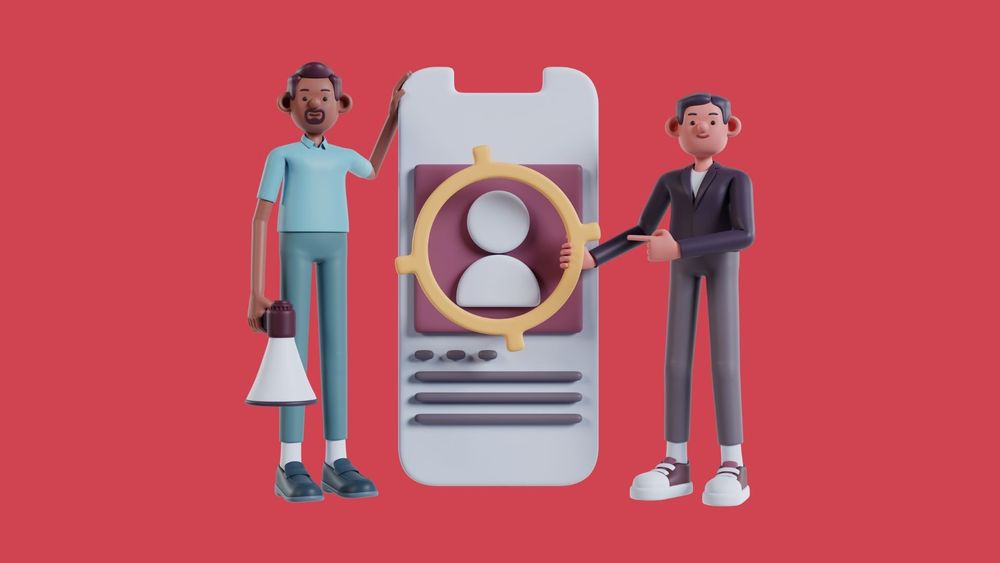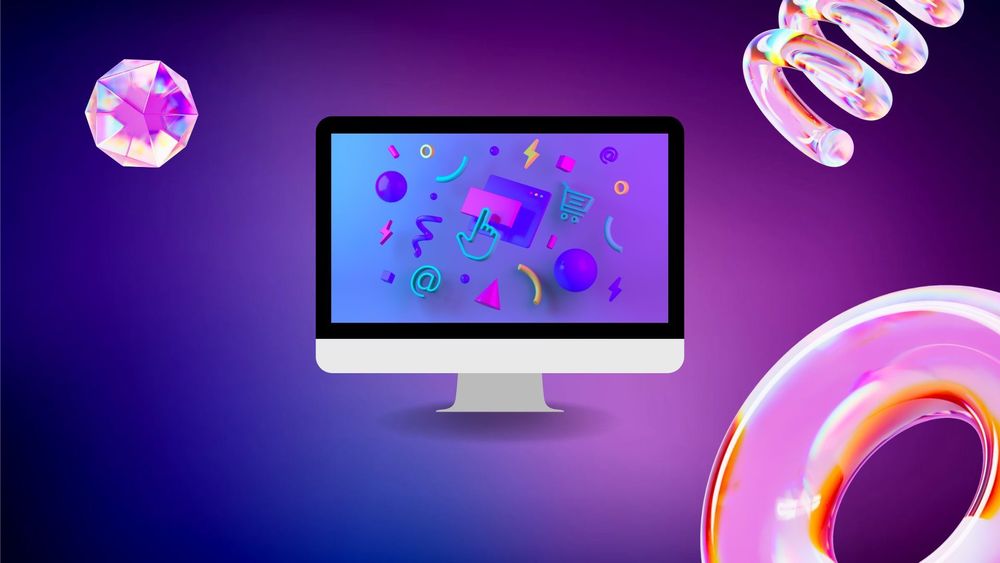Retro design has a timeless allure that continues to captivate designers and enthusiasts alike, uniquely blending nostalgia and creativity.
In the realm of 3D modeling, exploring retro aesthetics offers a fascinating journey into the past, combining classic elements with modern technology. This exploration not only adds a nostalgic charm to digital creations but also provides a fresh perspective on design evolution and innovation.
We will delve into the world of retro design within 3D modeling, uncovering its enduring appeal and limitless creative possibilities for professionals, businesses, and agencies in the digital design landscape.
Understanding the Appeal of Retro Design
The Definition and Origin of Retro Design
Retro design refers to a style that intentionally incorporates visual elements and motifs from the past, typically from the 1920s to the 1980s. This design approach is characterized by its use of bold colors, graphic shapes, and vintage typography that evoke the spirit of bygone eras.
The term "retro" itself is derived from the Latin prefix "retro-", meaning "backwards" or "in past times". The origin of retro design can be traced to the desire to celebrate and revive the aesthetic qualities of earlier periods. It's a form of artistic nostalgia that pays homage to the creative innovations of the past while reinterpreting them for contemporary audiences.
The popularity of the retro style surged as a counter-movement to the rapidly changing trends in technology and fashion, offering a comforting sense of familiarity and timeless charm amidst the new and the transient.
Why Retro Design Still Captivates Today
The appeal of retro design in today's digital world is multifaceted. Despite the constant influx of new design trends, retro design stands firm, offering a visual and emotional anchor to a seemingly simpler time.
This allure is partly psychological; retro design can trigger feelings of nostalgia, which is a powerful emotional response that can bring back personal memories and create a sense of comfort.
Moreover, retro design elements such as vintage typography, textures, and color palettes evoke authenticity and craftsmanship, qualities that are often sought after in an era dominated by mass-produced and ephemeral digital content.
The contrast between old and new also generates a distinctive aesthetic that can help a brand or product stand out in a crowded marketplace.
Ultimately, the retro style remains captivating because it marries historical reference with modern sensibility, creating timeless visual narratives that resonate with a wide audience.
The Influence of Nostalgia in Retro Design
Nostalgia is a potent force in the endurance of retro design. It taps into the collective memory and personal experiences of individuals, creating a bridge between the past and present.
The familiarity of retro-inspired visuals can evoke a sense of security and warmth, often providing comfort in an ever-changing world. This emotional connection is a powerful tool for engagement in various industries, from fashion to technology, as it can generate a strong, almost visceral reaction from the audience.
By harnessing the power of nostalgia, designers can create works that not only appeal aesthetically but also resonate on a deeper, more personal level.
Consequently, the retro style often goes beyond mere aesthetics, becoming a means of storytelling that can evoke a shared heritage and celebrate cultural milestones, making it a timeless component in the designer's toolkit.
Y2K vs Retro Design
While both Y2K and retro design evoke elements of the past, they represent distinct cultural and aesthetic movements.
Y2K design is characterized by futuristic and often digital-inspired motifs, reflecting the anticipation and uncertainty surrounding the turn of the millennium. In contrast, retro design draws inspiration from specific historical periods, embracing nostalgic elements such as vintage typography, color palettes, and iconography.
While Y2K design reflects a forward-looking mindset tinged with nostalgia for the future, retro design focuses on capturing the essence of bygone eras, offering a nostalgic journey through time.
However, in the last couple of years, both design styles have become more popular among graphic designers and in the graphic design industry in general.
Retro Design in the Context of 3D Modeling
Translating 2D Retro Style to 3D Space
The translation of 2D retro design into 3D space presents both a challenge and an opportunity for digital artists. It involves a thoughtful process of extending retro graphics' flat, often simplistic features into the depth and complexity of three dimensions.
This requires not only an understanding of the fundamental design principles of the past but also the skill to reimagine these elements within a modern framework.
When executed successfully, the result is a rich, textured 3D model that retains the charm and character of the original retro style. Designers must consider how elements like lighting, shadow, and texture interact in a 3D environment to convey the same vintage feel of the 2D originals.
This fusion of old and new can breathe life into retro designs, allowing them to inhabit spaces and tell stories in ways that were not possible before.
Challenges and Solutions in Retro-futuristic 3D Models
Creating retro-futuristic 3D models is a complex task that requires a delicate balance between vintage aesthetics and futuristic vision.
One of the main challenges is maintaining the authenticity of the retro elements while integrating them into forward-thinking designs that resonate with contemporary audiences. Another hurdle is ensuring that the technology and materials used in the models are true to the era being referenced, without compromising on the quality and detail that modern viewers expect.
To overcome these challenges, designers can employ a variety of solutions. Research is crucial; understanding the materials, technologies, and design philosophies of the past can inform more authentic and coherent 3D models.
Additionally, using modern software that allows for high levels of detail and customization can help in faithfully recreating textures and surfaces reminiscent of the past.
It's also essential to have a clear concept that harmoniously blends the retro and futuristic elements, creating a cohesive design that pays tribute to the past while looking to the future.
Case Studies in Retro 3D Modeling
Examining case studies in retro 3D modeling reveals the depth and versatility of this design approach. For instance, the recreation of classic cars in 3D has allowed designers to showcase every detail, from the chrome accents to the leather upholstery, encapsulating the essence of a bygone era in a tangible form.
Additionally, video game developers have successfully used retro 3D modeling to capture the look and feel of vintage games, but with the added depth and interactivity that modern technology affords.
By studying these and other examples, it becomes clear that retro 3D modeling is more than just a stylistic choice; it's a storytelling tool that brings history to life in a new and engaging way for audiences today.
Retro Design for Different Audiences
How Professional 3D Designers Can Leverage Retro Styles
Professional 3D designers can leverage retro styles to set their work apart and engage with audiences on a deeper level. By infusing modern 3D projects with retro elements, graphic designers evoke a sense of nostalgia while providing a unique aesthetic experience.
This can be particularly effective in industries such as gaming, where retro styles can add a layer of authenticity to game environments and character designs.
In product design, a retro approach can help in creating items that stand out for their classic appeal, often resulting in a strong emotional connection with the target market.
Furthermore, designers can use retro styles in their portfolios to showcase versatility and a solid grasp of different historical design movements. This not only broadens their appeal to potential clients but also demonstrates their ability to blend different eras into a cohesive, contemporary design language.
Harnessing Nostalgia: Incorporating Retro Design into Modern Graphics
Graphic designers can leverage retro design elements to evoke nostalgia and add visual interest to their work. By integrating vintage typography, color schemes, and imagery, designers can create a sense of familiarity and warmth, resonating with audiences who long for the aesthetics of the past.
Additionally, incorporating retro design elements allows designers to tap into a timeless aesthetic that transcends trends, giving their work a sense of enduring appeal. Moreover, blending retro design with modern techniques and technologies enables designers to create unique and eclectic visuals that stand out in today's saturated digital landscape.
Ultimately, by embracing retro design, graphic designers can infuse their work with a sense of nostalgia while offering a fresh perspective that captivates contemporary audiences.
Retro 3D Models for SMEs: Marketing and Product Design
Small to medium-sized enterprises (SMEs) can harness the charm of retro 3D models for both marketing and product design to differentiate themselves in the market.
In marketing, these models can evoke a warm, nostalgic feel, making brand messaging resonate more effectively with audiences who appreciate the sentimentality of retro aesthetics. Retro 3D models can be used in promotional materials, social media campaigns, and interactive web experiences to create a memorable brand identity.
In terms of product design, SMEs can adopt retro styles to give physical products a unique, vintage look that appeals to consumers seeking individuality and craftsmanship. This can be particularly effective for products such as furniture, home decor, and lifestyle goods where design is a key differentiator.
Implementing retro design in 3D models allows SMEs to preview and refine vintage-inspired products before they hit the market, ensuring a blend of nostalgia and modernity that can appeal to a broad customer base.
Enhancing Creative Campaigns with Retro-inspired 3D Models
Advertising agencies and marketing firms can significantly enhance their creative campaigns by incorporating retro-inspired 3D models. These models can serve as eye-catching visual elements that immediately draw the viewer's attention and generate interest.
For instance, a 3D model of a vintage record player or classic television set can be a centerpiece in a print or digital ad, evoking feelings of nostalgia and thus creating a stronger emotional connection with the campaign.
Moreover, retro 3D models can be used to tell a story or convey a message that resonates with specific target demographics, particularly those who have a fondness for the eras represented. They can also provide a stark contrast in modern settings, offering a visually striking juxtaposition that can make a campaign memorable.
Ultimately, using retro-inspired 3D models allows for more creative storytelling possibilities and can help a campaign stand out in a saturated media landscape.
Retro 3D Material for Interactive and Engaging Learning Experiences
Educational institutions and trainers can use retro 3D models to create interactive and engaging learning experiences. By incorporating retro design into educational material, educators can spark curiosity and foster a connection with historical topics.
For instance, history and design courses can benefit from 3D models that accurately represent architectural styles or industrial design trends of specific time periods.
Interactive 3D models offer a hands-on approach to learning, allowing students to explore and manipulate historical objects in a virtual environment. This can enhance understanding and retention of information. Moreover, retro 3D visuals can be incorporated into gamified learning, making education more appealing and fun for students.
By blending educational content with retro aesthetics, educators can cultivate a learning atmosphere that is both informative and visually stimulating, catering to the diverse learning styles of students.
Practical Steps for Creating Retro 3D models
Essential Tools and Software for Retro 3D Modelling
To create compelling retro 3D models, designers need the right tools and software that offer flexibility and control.
Industry-standard 3D modeling software like Blender, Autodesk Maya, and Cinema 4D provide robust toolsets that can help in sculpting, texturing, and animating retro-inspired models. These programs offer a range of features that are essential for achieving the desired vintage look, such as advanced rendering capabilities and a wide array of shaders and materials.
Additionally, texture libraries and plugins that contain retro patterns, materials, and effects can be incredibly useful for adding authentic details to 3D models. For more specialized tasks, software like Substance Painter and ZBrush can be used to create custom textures and fine details that are characteristic of retro designs.
However, we have found a tool that allows you to do all the above in one place without the countless learning hours. With an intuitive graphic design tool user interface, Pixcap allows you to use already existing 3D elements, templates, and mock-ups and customize them to your brand look and feel and incorporate the retro aesthetic in minutes.
With the large content library, Pixcap's material library also allows you to change the texture, pattern and material of any surface of the element you are using instantly as well!
Try Pixcap now for free - don't waste time on learning, just start designing!
Using these tools effectively can result in high-quality 3D models that accurately reflect retro aesthetics in a three-dimensional space.
Techniques for Creating a Convincing Retro Aesthetic in 3D
Achieving a convincing retro aesthetic in 3D requires a combination of design knowledge and technical skills. One technique is to use period-accurate color palettes that reflect the era being referenced. Designers should research the popular colors of the time and apply them judiciously to their models.
Another important aspect is texture; adding grain, wear, and tear can give models an aged look synonymous with retro design.Lighting also plays a critical role; it should mimic the lighting technology of the time, such as the soft glow of incandescent bulbs for a mid-century modern feel.
Additionally, incorporating design elements and motifs from the chosen era can further reinforce the retro aesthetic. For instance, adding a touch of art deco can transport a viewer back to the 1920s.
By paying attention to these details, designers can create 3D models that are not only visually striking but also deeply rooted in the retro vibe they aim to capture.
Experimenting and Expanding Your Retro 3D Toolkit
To master the art of retro 3D modeling, it is vital for designers to continually experiment and expand their toolkit. This means stepping outside of one's comfort zone and trying new techniques, such as mixing different eras of design to create something truly unique. Experimentation can lead to discovering unexpected textures, shapes, or lighting setups that enhance the retro feel.
Designers should also stay abreast of new software updates and tools that can make the retro design process more efficient and detailed.
Participating in online forums and following industry leaders can provide inspiration and insights into new methods and workflows. Additionally, personal projects can serve as a playground for testing out new ideas without the constraints of client briefs.
By constantly adding to their skill set and toolkit, designers can push the boundaries of what is possible in retro 3D design and remain at the forefront of this nostalgic yet innovative style.
The Future of Retro Design in 3D Modeling & Graphic Design
The Sustainability of Retro 3D Design in a Fast-Paced Digital World
In a digital world where trends come and go with speed, the sustainability of retro 3D design hinges on its ability to evolve. The timeless appeal of retro design lies in its adaptability and the emotional connection it fosters.
As technologies advance, retro 3D design can incorporate new techniques and mediums, ensuring it remains relevant and engaging. For instance, the integration of retro aesthetics with virtual reality and augmented reality experiences can open up new avenues for interaction and immersion.
Moreover, the sustainability of retro design is bolstered by its versatility across various industries. From gaming and film to advertising and education, the retro charm has proven to be a valuable asset.
As long as designers continue to innovate within the retro style, finding new ways to blend it with contemporary sensibilities, retro 3D design will maintain its place in the digital landscape, resonating with audiences and standing the test of time.
Innovations and Trend Forecast for Retro 3D Design
As we look to the future, retro 3D design is poised to continue its integration with innovative technologies. One emerging trend is the use of machine learning to analyze historical design patterns and generate new models that reflect retro styles with a contemporary twist.
Another innovation lies in the use of 3D printing, which allows retro designs to be brought into the physical world with precision and customization previously unattainable.
In terms of trend forecasts, we can expect a resurgence of specific eras within the retro aesthetic, driven by anniversaries or cultural revivals. For instance, the upcoming decades may see a revival of 90s digital art, influencing 3D model aesthetics with its characteristic bright colors and geometric shapes.
Furthermore, as sustainability becomes increasingly important, there will be a growing emphasis on reusing and repurposing classic designs, giving them new life through 3D modeling. These innovations and trends will ensure that retro design remains an exciting and dynamic field within the digital arts.




